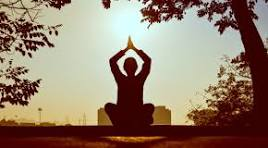Advantages of a Yin Yoga Teacher Training in Bali
Many benefits of yin yoga, such as flexibility, strength, a peaceful mind, better sleep, improved digestion, and a lengthy list of other perks, are rapidly realized by multiple students who step onto a yoga mat. But with so many different yoga styles available, how can you decide which one is perfect for you? Many pupils love trying out various instructional techniques to evaluate the merits of yoga holiday Bali.
This article will discuss yin yoga, a style of yoga that works deeper into our bodies by placing us in passive poses for prolonged periods. The gentle movements of this style of yoga help trainees recognize sensations before they turn into injuries, which lowers the risk of mishaps.
What is Yin yoga?
Yin yoga is different from many other types of yoga because there is no flow from pose to pose. Depending on the posture and the students' degree of experience, each yin pose is held for a period ranging from 3 to 7 minutes. Most positions may be performed while sitting or lying on your back or stomach, which allows you to hold the posture for a few minutes. Unlike restorative yoga, which focuses on complete relaxation, yin yoga should instead elicit some sensation—a combination of reduction and anxiety.
Poses that may have previously been practiced- in a vinyasa yoga session have distinct names in yin yoga teacher training. The alignment and general focus of yin poses differ from how you might practice them in a flow class because yin poses; have different rules.
Yin yoga breathing techniques
In yin yoga, we use the breath to support the poses when they feel unpleasant. Via uncomfortable times and sensations, the body releases deeply held tension and brings about long-lasting changes. By letting the breath naturally flow, we maintain mental clarity and enable our bodies to develop into the feelings we're experiencing. Yin yoga is super easy for the breath to help with focus, while other forms of yoga use it to create heat. See it as a silent friend comforting you during a difficult time.
Four Main Advantages of Yin Yoga
1. Yin yoga aids in the relaxation of tension, stress, and worry.
We can go deeper into the connective tissues around the joints with yin yoga and relieve stress because of its stretching and releasing effects. Moreover, it aids in extricating energy from the body. In particular, it aids in the escape of emotional energy that could be a source of tension, worry, or anxiety.
Being permitted to "just be" is profoundly countercultural. Perhaps all you need to do to relax your thoughts are merely slow down. With the time you have, try your best to inhale and exhale "normally" while performing each asana.
Try to pinpoint the part of your body that needs attention if you're doubtful whether the physical stress you're experiencing has an emotional cause. The primary joint systems are frequently affected by the anxiety that the body experiences. Our primary mutual systems are particularly vulnerable to emotional stress since they bear the biggest load while supporting the body. The spine, shoulders, and hips are some of them.
2. Enhance Other Workouts
The idea is about the balance between two opposing energies and is related to the ancient Chinese concept of yin and yang. According to their characteristics, several workout methods can be classified as either yin or yang. Running, athletics or vinyasa-style/heat-building yoga are examples of yang-style exercises since they are vigorous, make you sweat, are dynamic, and are repeated. The characteristics of yang are movement, heat, and masculinity. Yin, the feminine principle, is associated with release, balance, quiet, and cooling. Stretching and relaxation-based exercises are known as "yin" exercises. Yang-style exercises can overwork, hurt, or exhausts the body if they are performed too frequently without balance.
3. It Balances Your Chi
According to traditional Chinese medicine, life energy known as "chi" powers our bodies. Meridians are the name for the physical channels via which chi flows. Any kind of yoga could have some impact on the meridian pathways, but yin yoga has a more significant effect. Every meridian passes through the legs and back at some point, and many yin postures will simultaneously affect numerous meridians. Students may be allowed to practice on each of the meridians in yin classes, or there may be an emphasis on only a few.
4. It increases tenacity and persistence.
We can use yin yoga practice to help rebalance our energy when things are feeling a bit; more difficult than usual or when certain circumstances are making it more difficult for us to concentrate on other aspects of our life. Yin teaches us that to advance- one must remain still and cope with whatever ideas or emotions arise. You will become more adept at handling the discomforts in life if you learn to take each moment as it comes—one breath at a time, one thought at a time. It becomes more difficult to suppress the "monkey mind" as we maintain each stance, and occasionally we want to change positions. Yin instructs us to locate comfort in an uncomfortable situation and observe our thoughts and behaviors from a tranquil state.
.png)


Comments
Post a Comment